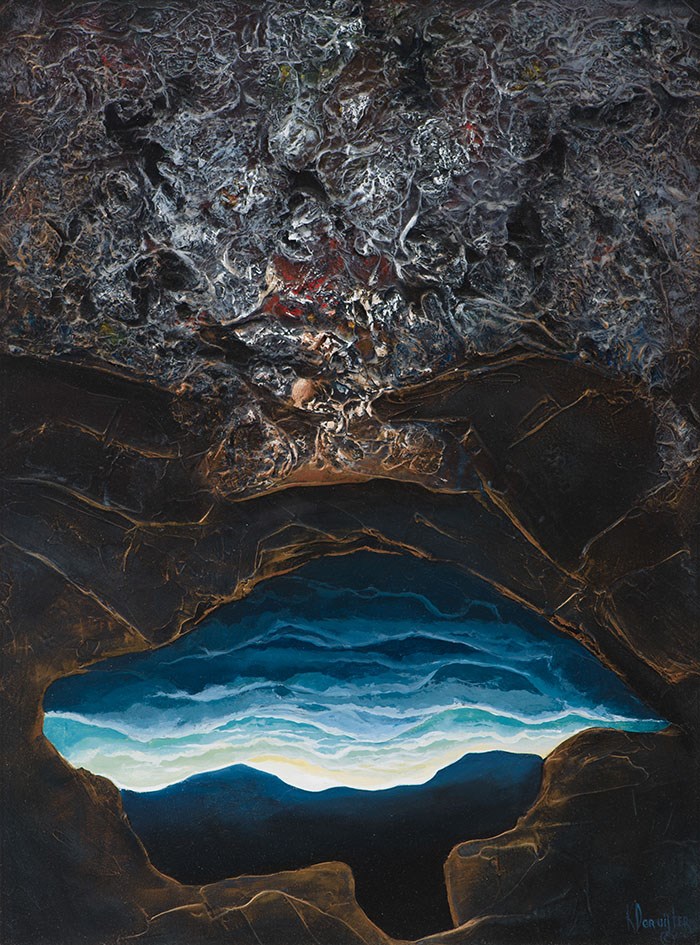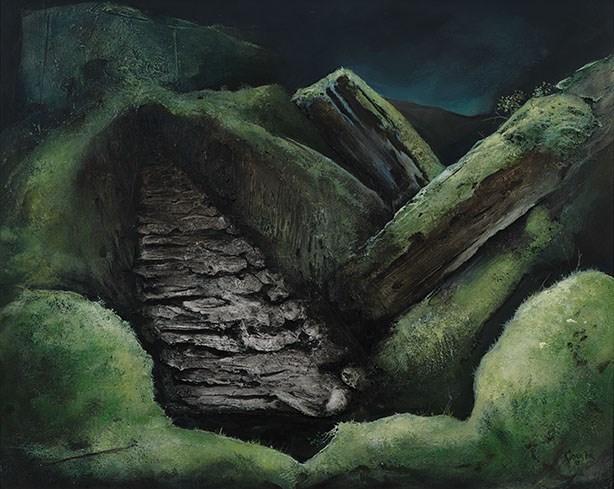
Craig Gilbert | [email protected]
Genocide. End of story, start of conversation.
The Jasper Yellowhead Museum and Archives opens a month-long exhibit that those in the know say is a first in terms of subject matter.
Genocide: Life, Death and In-between featuring the work of Karel Doruyter runs from June 2 to July 1. It’s a joint presentation with the “generous” support of Mountain Galleries.
“Karel Doruyter began the “Genocide Series” in 2004,” according to Wendy Wacko. “Initially it was the annual visits to Haida Gwaii and seeing the rapidly deteriorating totems that influenced the start of this series. Each painting reflected some part of what was seen or felt viewing these scenes many times. The painting gradually changed and became a personal internal process, as well as a chronological sequence of man's inhumanity to man. It is a journey into the dark and a possibility of leaving it.”
The use of the totems as a metaphor for genocide provides for a tangential connection to Jasper and its totem poles. There is a more direct connection for Warren Waxer, who chairs the museum board and has been working to bring in the exhibition for years.
“We normally host local and regional artists that reflect our history and landscape; they are exhibits that make you want to look outside,” Waxer said. “This exhibit compels you to look inside. We believe this a worthy departure from that policy.”
Museum manager Rob Hubick hopes the exhibit stirs conversation, and draws more locals through the doors. He said so far in 2018 the museum is on-par with its high watermark attendance numbers from last year.
“It is important that museum's talk about topics that are controversial, to create more awareness of some of the things that are happening in our world,” he said. “It is a role that we need to play.”
He also echoed the words of the artist himself, who hopes the work leaves people with a “message of hope, peace and a true understanding of sanctuary."
“The photos don’t do it justice,” Hubick said. “His technique is something no one else does.”
It’s a “timely and meaningful educational component” that captivates Waxer. That and where the imagery takes the observer en route to that rosey last note.
“Of course art appreciation is necessarily subjective but it would be difficult to not be drawn in by the richness of the Haida Gwaii rainforest that is depicted in most of the paintings,” Waxer waxed. “It would also be impossible not to contemplate the dark heart of man through the ages. This exhibit is of exceptional quality and the images are worthy of our time.”





